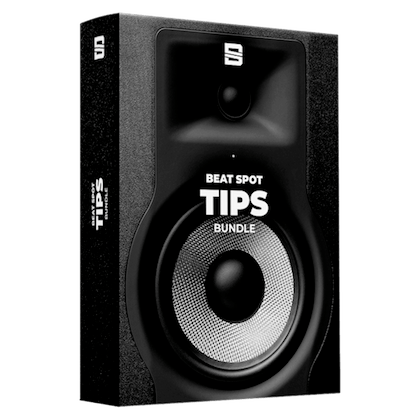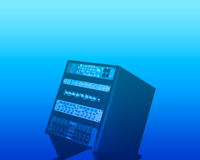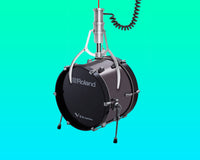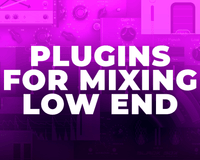Editing and tuning your vocals properly is the most important part of the job if you want to get a professional and clean sound. Often, this stage is left out cause we focus more on which type of compressor or equalizer to use.
However, they will not work to their full potential if we did not do the right editing.
So before we think about what expensive piece of outboard we should buy, let's try to master editing!
This detailed guide will tell you everything you need to know to get great results out of your vocals.
Comping
It consists of creating a final vocal track made up of the best pieces of the takes we have recorded. This first moment is perhaps the most important, as it will determine the final material we will use for our song.

Usually, we work for "phrases", so for each phrase, we will stop and listen between the takes, which is the best to use, also verifying how it ties with the previous phrase.
There are various reasons why you can choose one take instead of another.
First of all, we try to choose takes where the singer has not made mistakes; then we try to select the one with the best intention. Parameters such as pitch and tempo can be easily corrected, so let's prioritize the choice of takes that well represent the song's final idea.
Once a final take draft is completed, we try to correct any details that could be improved, such as overly emphatic consonants, unsigned syllables, wrong cadences, or any technical micro imperfections that can be improved.
Now that we have our final take let's move on to the actual editing.
Editing
In editing, we will work on the final track derived from comping. The first thing we should take care of is getting the vocal in time. Let's not worry about placing every single consonant perfectly on the grid, otherwise, it will sound too perfect and robotic; we always try to preserve the performance's humanity.
The most effective way to keep time is to cut the section we are interested in and to reposition it where we like best. Usually, the displacements will be minimal, and therefore, we would have the space to move our word or phrase.
If this will overlap with the others that flank it, we have two options: squeeze, or, if that doesn't work either, go back to the comping phase and replace the take.
Stretching must be applied with great caution; in fact, a tiny intervention is enough to make the timbre of your voice metallic and unnatural. It must be said that generally, where you have great use of autotune, you can be more flexible and accept more metallic takes as well.
I believe that Ableton is by far the best tool to be able to stretch; it is, in fact, very intuitive, simple to use, and has excellent algorithms. The "complex" or "complex pro" algorithm tends to allow us to go a moment further than others.

Finally, we will have the longest but most crucial part of the editing, the automation of the voice gain to make it as constant as possible. Arm yourself with great patience, do not think that this work can be replaced by a compressor or a vocal rider or other such gadgets.

The compressor must work as little as possible in terms of gain reduction dynamics; only in this way you will get the most out of it, and instruments such as the vocal rider will not allow you to obtain a satisfactory result. None of these extra tools will allow you to work on every syllable and thus be able to increase the quality and intelligibility of your voice significantly. Trust me, it's a giant nuisance, but it leads to great results; maybe don't always do it, only on well-paid jobs.
Finally, we try to understand what to do with the breaths. We lower and tweak those that are too high, but in genres such as trap or rap, keeping them can be essential since it gives rhythm to the voice, but you may decide to cut them entirely in other more melodic genres.
Tuning
There are various programs to tune voices, such as Melodyne, Waves Tuner, or Logic's internal tuner. Everyone works similarly. In general, when we go to intone the voices, we must first determine the key. Let's set it in our tuning tool so that it allows us to move only in the right notes.
Melodyne allows you to automatically place notes in what he thinks should be the right point on the scale. I always recommend doing this operation on all audio and then reviewing the result by correcting possible imperfections.

In general, when we move a note, let's also remember to move the formant in turn in the opposite direction. As a result of a smaller and higher voice, to not change the naturalness of it, we move the formant a little lower to restore body and size, and the opposite in the opposite case.

Remember that some notes will probably have to be cut, as these programs cannot detect all the small variations or slight glissando voices.

Finally, you will often find yourself dealing with "vibrato". These are quite tricky; too strong processing could cause you to get an unnatural and metallic sound, similar to autotune.

Cleaning
Now that our voice is almost ready, it is time to clean it of unwanted sounds, room reverbs, noises of electricity or fans, pops, and saliva. This can quickly be done with de-noise tools such as Izotope RX.
A very common problem can be, for example, the electrical background noise found in many cheap sound cards or inexpensive microphones or the noise of the air conditioning fan. In this case, it will be sufficient to use the spectral de-noise, "teach" RX what it must eliminate by making it "listen" to an area where there is only noise to be eliminated, and adjust the threshold and reduction.

Another can be the reverb of an untreated room, in which case using a de-verb can quickly solve the problem.

It's very important to remove all these noises cause when you compress, they will start to be loud in your mix!
With RX, you can also remove saliva pops or noises using de-crackle and de-click.


Finally, with it, you can also do an extensive de-essing job to precisely identify the affected area to correct it as right as possible.

Now that you finally complete your editing, you can move on to mixing!
This article has been brought to you by Edoardo Del Torre.







